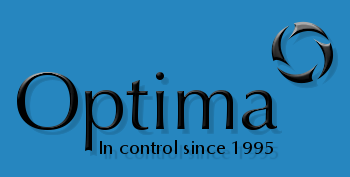 With money in short supply an option to improve the presses manufacturing efficiency at a fraction of the price of a new machine was immediately attractive to the management team at Polestar Purnell in Somerset.
With money in short supply an option to improve the presses manufacturing efficiency at a fraction of the price of a new machine was immediately attractive to the management team at Polestar Purnell in Somerset.
When presented with poor print and fold quality, coupled with sleep depriving reliability for three ageing gravure printing presses, Optima Control Solutions Ltd. provided a remarkably successful answer for the Polestar Group.
Analysis of performance data for the three gravure presses indicated that the reliability of the machinery was significantly influencing both the factory and group performance. Their poor reliability and faltering quality of print impacted on machine run speeds and product quality. Polestar asked Optima to survey the printing machines and suggest a possible remedy.
It was clear to Optima that the machine’s original DC drives manufactured by Cerutti, were past their operational best. Technology and techniques for controlling web have advanced dramatically over the lifetime of these machines and support for the existing equipment was all but gone. Optima suggested the benefits of new technology; high performance control equipment that is supportable and available, correctly applied would bring positive results. These results being higher press speeds, faster make-ready times and remarkable improvements to fold and print register accuracy.
The Project
Optima’s brief was to replace the ageing control systems on 3 Cerutti 1759 model gravure presses, the aim was to improve manufacturing efficiency for the Polestar factory.
After their initial survey a detailed proposal was submitted. The document described the existing control principles for the presses, how these could be improved, and where advanced control methods could be applied to presses of this type. Optima included the customer’s site standard equipment where appropriate and recommended new components to replace obsolete original equipment.
In the solution, most of the original operational methods for the machine were retained, however Optima suggested some simple changes that made a noticeable improvement to the press start-up and make ready times.
David Forrester, Polestar’s then Manufacturing Projects Director commented, “Optima’s understanding of the presses and their attention to detail throughout the preparation stage was exceptional”
The Results
The positive outcomes of this project activity were many. The plants manufacturing efficiency improved by a staggering 50%. Register and fold accuracy became predicable and better than those enjoyed for some considerable time. Product quality was much improved whilst line speeds increased significantly.
Mr. David Forrester commented, “The success of the control system upgrades has allowed us to have far greater work planning flexibility, jobs are no longer allocated based on the individual machines’ performance criteria. Consistency in machine performance means that we can fully utilise normal shift patterns with minimal overtime commitment”.
Again David Forrester commented; “By ensuring all our presses could run at high speed and maintain quality, the upgrade opened up increased planning flexibility, as previously we had to reduce output to achieve quality. The accuracy and control that Optima’s system allows us means the presses’ fold variance is consistently within much tighter tolerances than we could ever achieve before the work was carried out”.
Note: Since completing this project in 2005, Polestar have consolidated their printing operations at a new manufacturing site in South Yorkshire.
